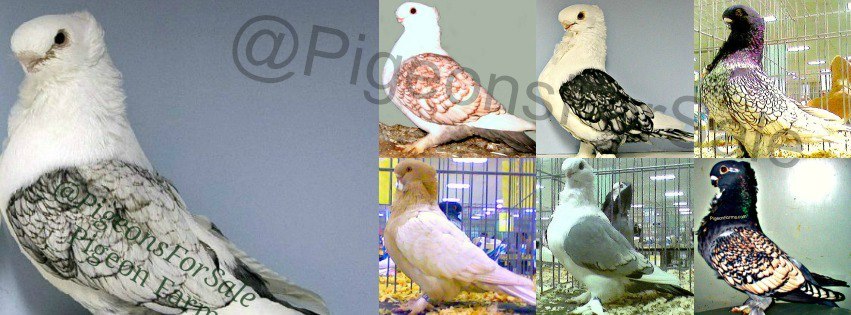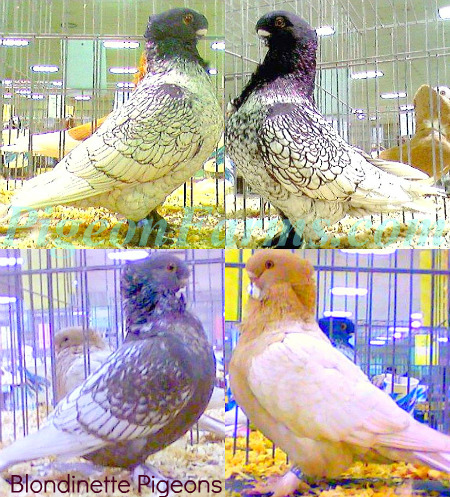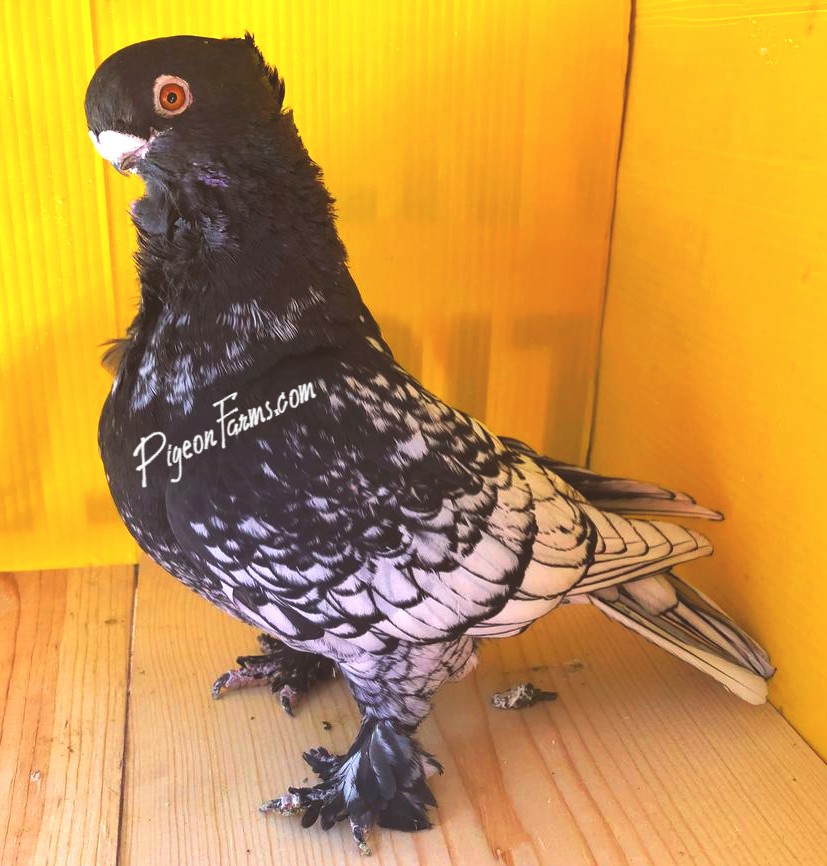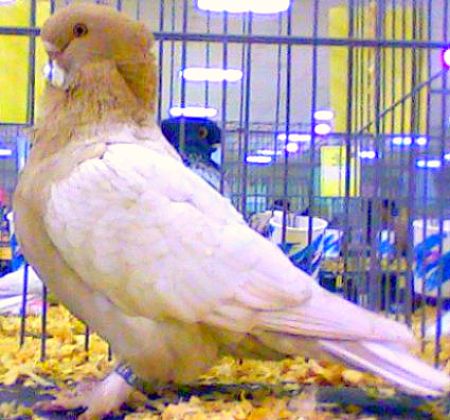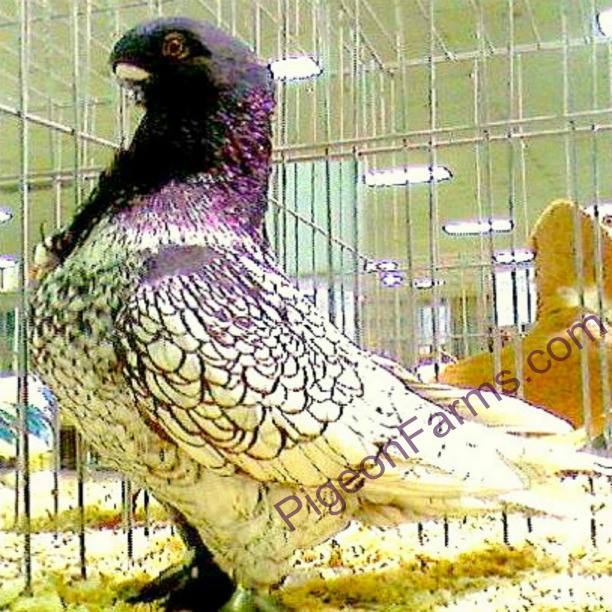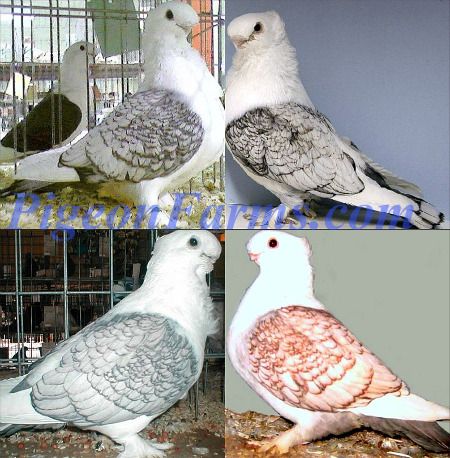BEAK:
Short, thick, wide at the gape, upper mandible curved downwards, forming continuation if curve of skull. Lower mandible stout, meeting and supporting the upper, both being of equal substance. The line between the mandibles must be straight, and so that the line were continued backwards it would run through the center of the eye. WATTLE: Small, heart shaped and fine in texture. Smooth and showing no break when viewed in profile. CHEEKS: Full and chubby. PEAK: Needle pointed, upright and central, raising above a well-defined mane and as high as possible. GULLET: Well developed and full under jowl. NECK: Thick, broad at base, well arched mane. Frill: As much as possible, well covered chest.
BREAST:
Full wide chest, well rounded. Body: Medium in size, compact, rather short than otherwise. Wings: Flights to be short and carried compactly over the tail. Tail: To be close fitting, short and carried above the ground. Legs and Feet: Moderate length of leg, grouse muffled, the feathers covering shanks and feet (expect domino) Plumage: Close fitting and in great condition. Frill to be as much as possible, and to cover the chest.
RECOGNIZED COLORS:
The Oriental Frill are split into two main color varieties; Satinettes and Blondinettes. Other Varieties of Oriental Frills exist such as Visors, Dominoes and Turbiteens. Color variations & markings:
SATINETTES:
Are predominantly white in color, with colored wing shields and tail. 10×10 white flights, and not less than 5×5 flights. Blue Laced: Beak, pale flesh; eye, very dark brown; head, neck and body under parts, white; shoulder, wing coverts, ground white, each feather edged all round with a fine purple edging. This edging may be laced, arrow pointed or ticked, preference to be given in the order named, and heavy, medium, or fine, but in either case, the edging must be distinct, even, regular and well defined; flights, white, 10×10, not less than 5. Tail, dark purple blue downward from a line across rump, having dark blue band at lower extremity, upon which should be on each and every feather a clear round white spot, “moon”, or band clearly defined; shaft of feathers dark. Brunettes: Same as blue laced, only differing in shade of color, the edging of each feather in shoulders being dark red brown, marked as in blue laced, ground color white. Sulphurettes: Same as above except the ground color on shoulders, wing coverts, and tail should be plae sulphur to white and every feather edged with sulphur of a darker shade. Tail, pale to dark sulphur, marked as in blue-lace Satinettes. Bluettes: Same as above except that shoulders and wing coverts should be clear solid blue with two clear-cut white bars, edged at lower extremity with black. Tail blue, marked as in blue laced Satinette. Silverettes: Same as bluettes except that should and wing coverts should be pale solid silver grey, edged at lower extremity with darker shade. Two clear cut white bars in brown at lower extremity. Tail grey, marked as in blue laced Satinettes Brownettes: Same as above except that the shoulders and wing coverts should be dove colored, with two clear white bars edged at the lower the lower extremity with brown. Tail brown, marked as in Blue Laced Satinettes. Black and dun laced: Same as Blue laced except that every feather on shoulders, wing coverts and tail should be edged with black or dun. The shafts of laced flights and tail feathers to be dark colored.
Blondinettes:
These are completely colored (except the Black and Dun laced) with the exception of the shoulders and wing coverts, upon which every feather should be edged (either laced, arrow pointed or ticked, preference to be given in the order named), on a white ground color and the tail also marked as in Satinette. The primary flights should be marked with an oblong white spot at the extremity of each feather. Blue Laced: Beak black; eye red; cere damson if possible, body and tail color a clear bright blue on a white ground. Spot tail. Silver Laced: Beak, horn color; eye, yellow gravel cere, flesh color, otherwise similar to blue laced except that the body and tail color should be silver grey and lacing a deeper shade of same color. Neck hackle must not show any yellow, sulphur or any alien color. Spot tail. Sulphur Laced: Beak horn color; eye yellow gravel; cere flesh color; body and tail color French grey with dark sulphur lacing light ground, proportionately suffused with pale sulphur according to width of lacing, the neck and head suffused as much as possible with a bright golden sulphur. Spot tail. Brown Laced: Beak horn color; eye red; cere flesh color; body and tail color and lacing acorn brown. Spot or laced tail, former preferred. Red Laced: Beak horn color; eye red; cere flesh color. Body, tail color and lacing a deep rich bright red. Spot or laced tail, former preferred. Yellow Laced: Beak horn color; eye yellow gravel; cere flesh color. Body, tail, color and lacing a rich soft yellow. Spot or laced, former preferred/ Barred Blues: Beal black color; eye red; body color, solid bright blue with two clear cut white bars, edged at the lower extremity with black, tail and flights as in Blue laced. Barred Silvers: Beak horn color; eye yellow gravel; body color, silver grey with two clear cut white bars, edged at the lower extremity with black, tail and flights as in Blue laced. Barred Browns: Beak horn color; body color, dove grey with two clear cut white bars, edged at the lower extremity with brown, tail and flights as in Blue laced. Black and Dun Laced: Beak, Black or horn according to color of pigeon. Eye, in Blacks, red; in Duns, yellow gravel. Cere in Blacks, damson, in Duns, flesh color. Head, solid or frosted. Ground color, white, every feather distinctly laced all over the bird and as far as possible right around the whole edge, including frill, muffs and tail. Feather shafts, Black or Dun as the case may be.
